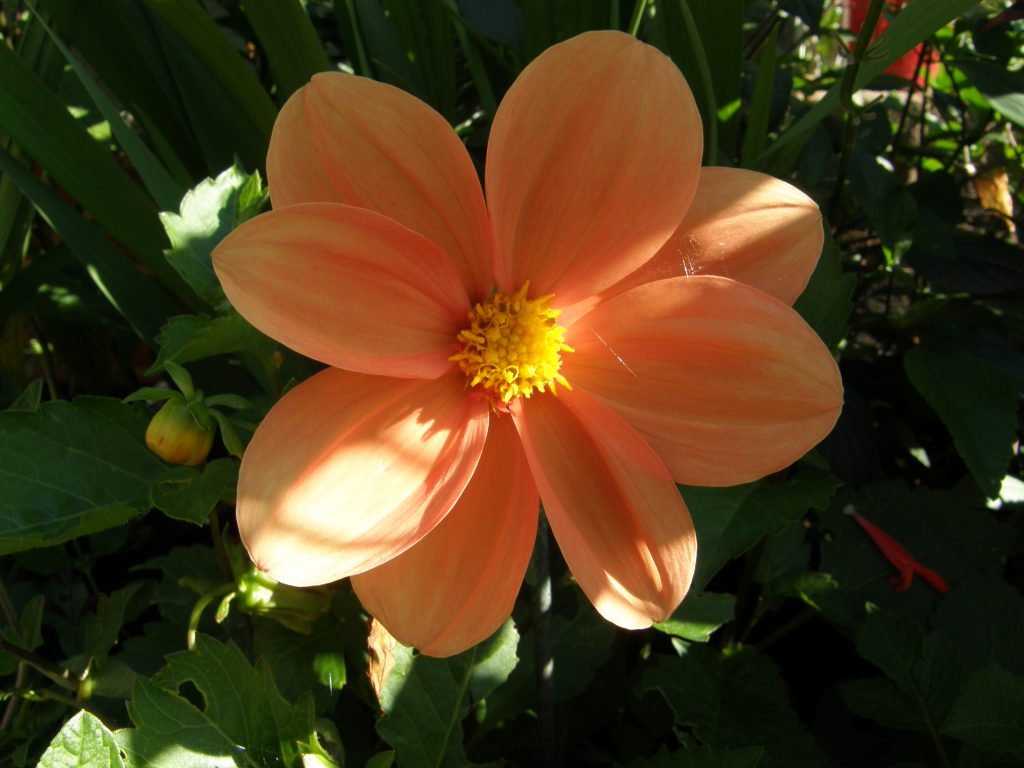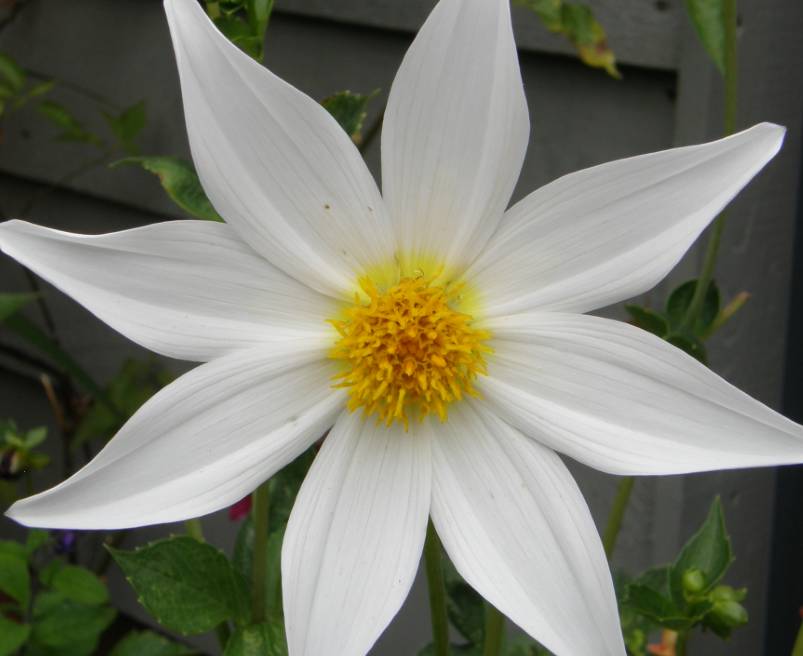I didn’t grow any big fancy dahlias this year. These are my favourite dahlias for 2024.
‘Cornel Brons’ overwintered in the cutting patch from last year, (did I detect a very light scent when I picked the last blooms at the end of October?). ‘Golden Sceptre’ joined it this year. There is something pleasingly warm about the yellow, and the deeper coloured centre. I also grew it because it is an older cultivar dating to 1938. It seems that not many older cultivars survive, and those that do appear mainly to be pom-pom/ miniature ball types.
I found lilac coloured ‘Caitlin’s Joy’ (miniature ball), a bit boring, and some of the heads ‘popped’ off and rolled away as I tried to pick the stems. Deep red ‘Tam Tam’ (miniature ball), had good long stems for cutting but didn’t produce many flowers, I will leave it in the ground and see what happens next year.
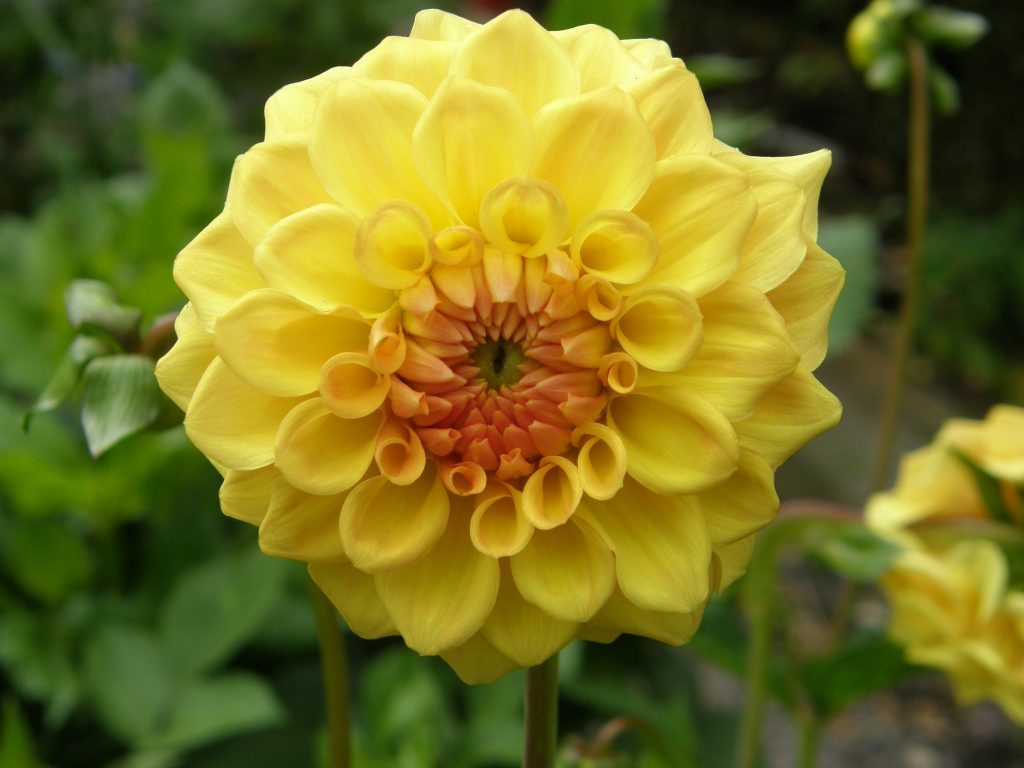
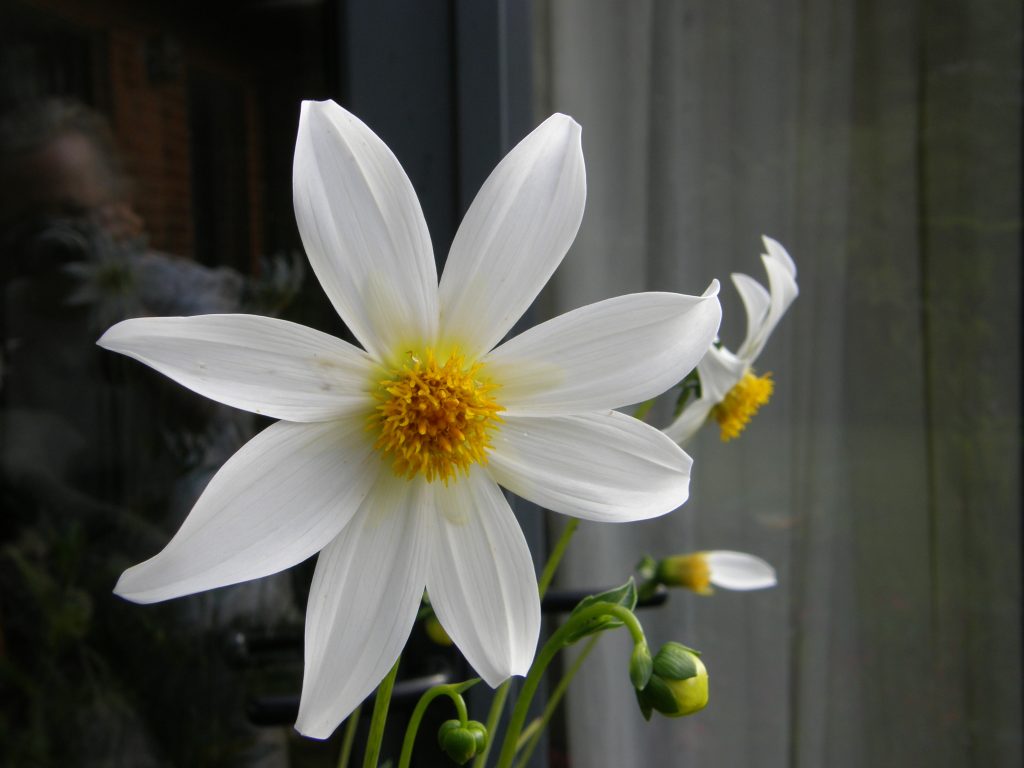
I have been hoping to find an elegant, tallish, white single-flowered dahlia with green foliage, (rather than the dark-leaved drama of ‘Twyning’s After Eight’). The honka types are too ‘whirly’ petalled, and some other white dahlia flowers are just a bit cartoonish and stubby-petalled. This is nearly it, and has been right under my nose for a few years, (a Mark Twyning selection 2011).
I think I bought it when The National Dahlia Collection was still at Varfell Farm in Cornwall,(the collection is now at Kehelland College in Cornwall). It was planted in my sunny, south-facing white/blue/yellow border and left to deal with winters in the wet clay ground. It never performed very well, so I potted what was left of it up, and this summer ‘White Seedling’ flowered and flowered, taller than it grew before, and more poised.
The dark foliaged Dahlia ‘Bishop of Oxford’ also flowered well for a long time in a patio trough, and of course bees loved the single flowers. It took over from oldie ‘G F Hemerik’ (1936), a single orange flowered low- ish growing dahlia with green foliage, which started in flower earlier, and was slightly taller in stature than last year.
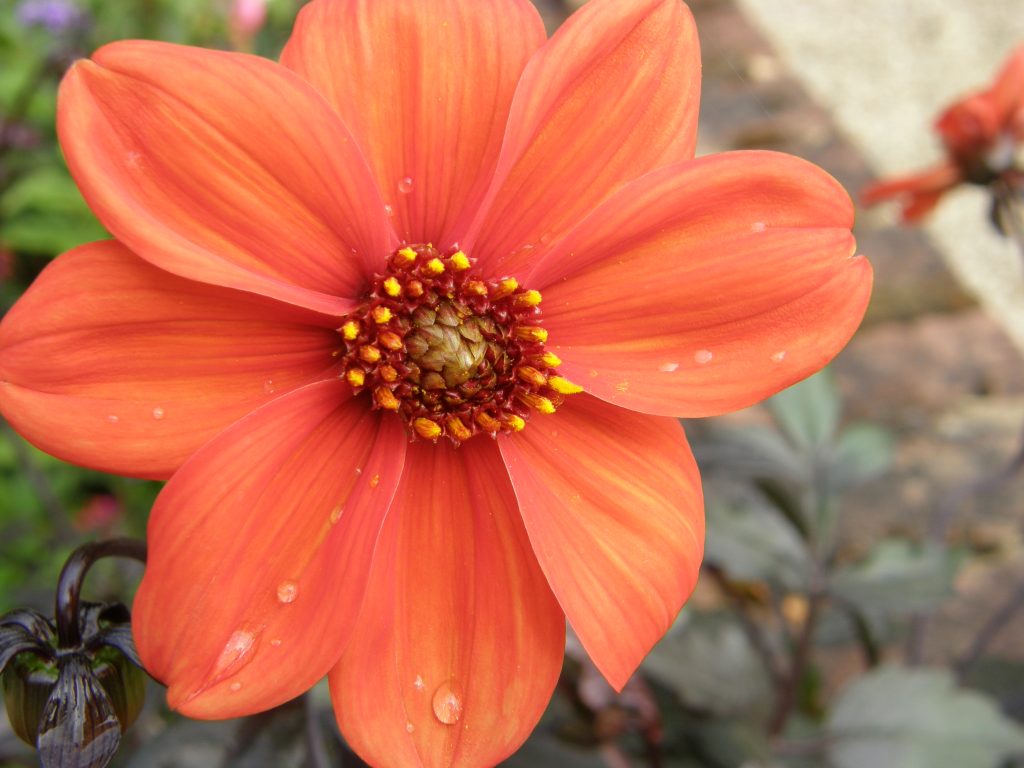
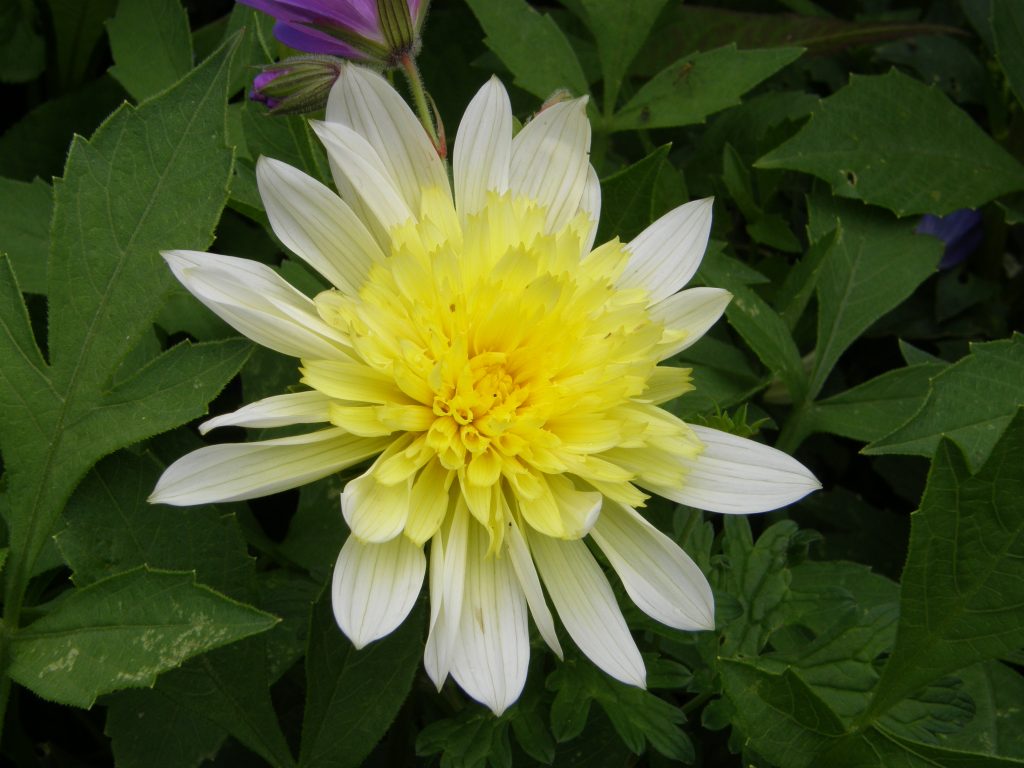
I wanted a dahlia that would ‘fit in’ in my mixed border. I think ‘Paso Doble’ worked. Quite low-growing and reminiscent of shasta daisies I also have in the border.
Also in patio pots I grew dahlia ‘White Aster’ again, another oldie. This dahlia starts in flower in early summer which makes it effective in the June-July part of the patio display.
